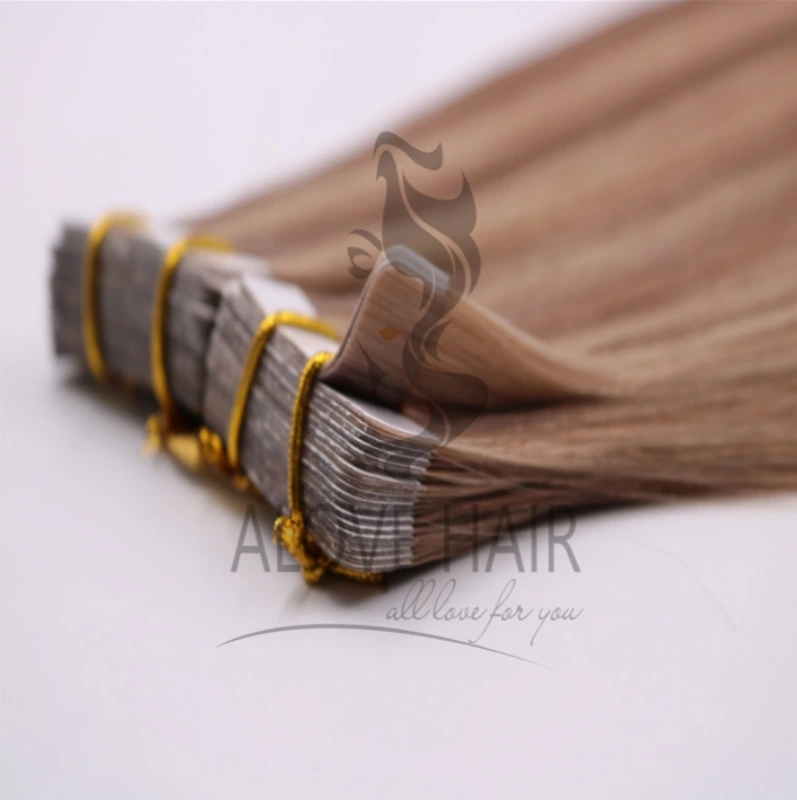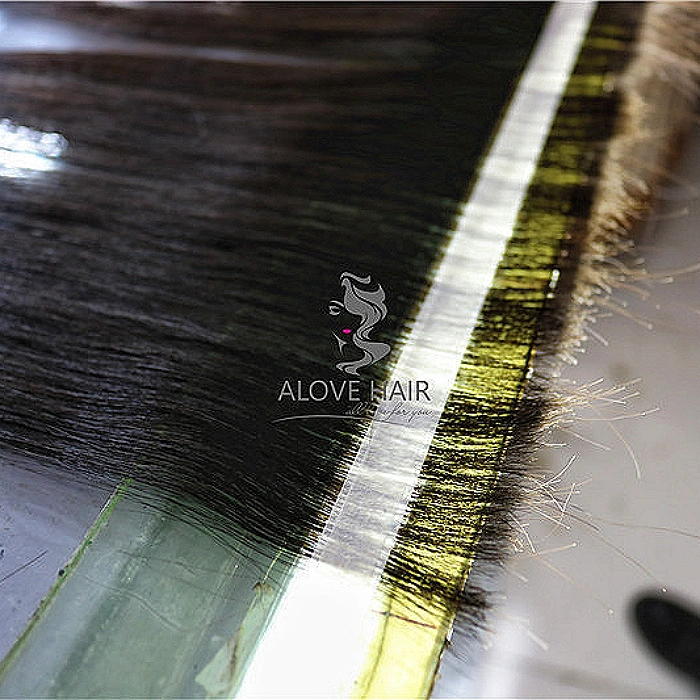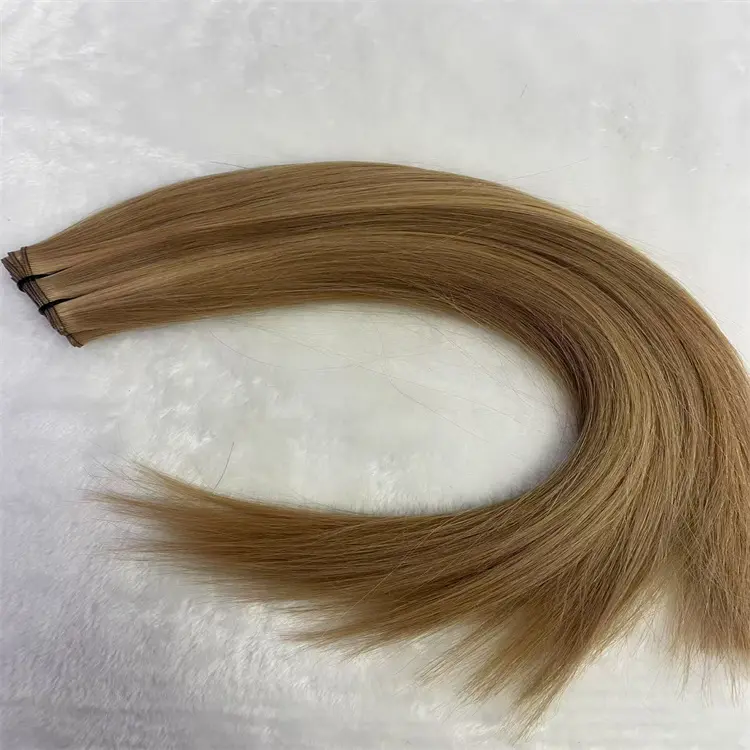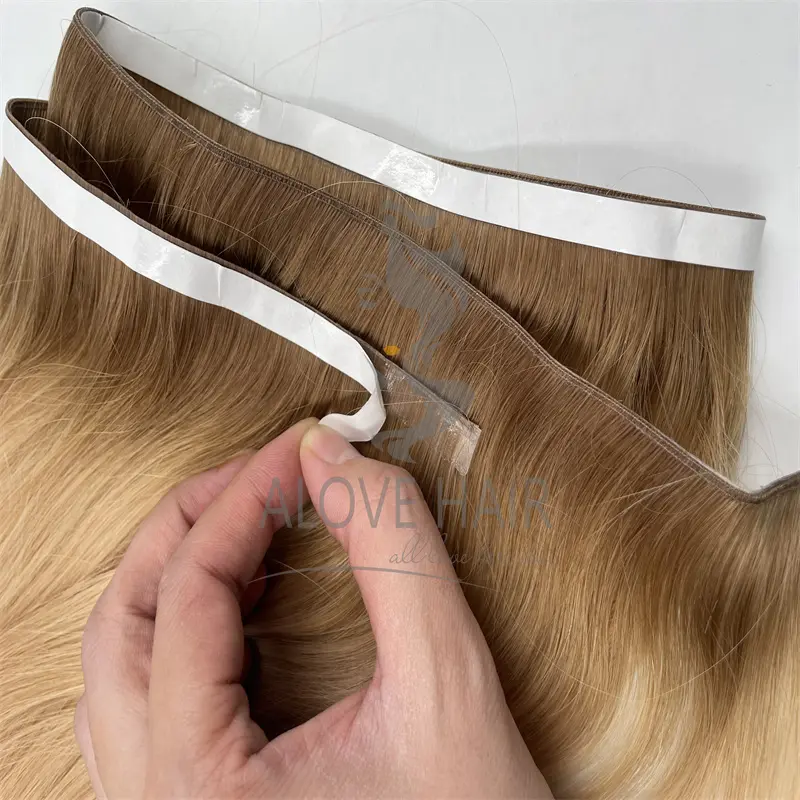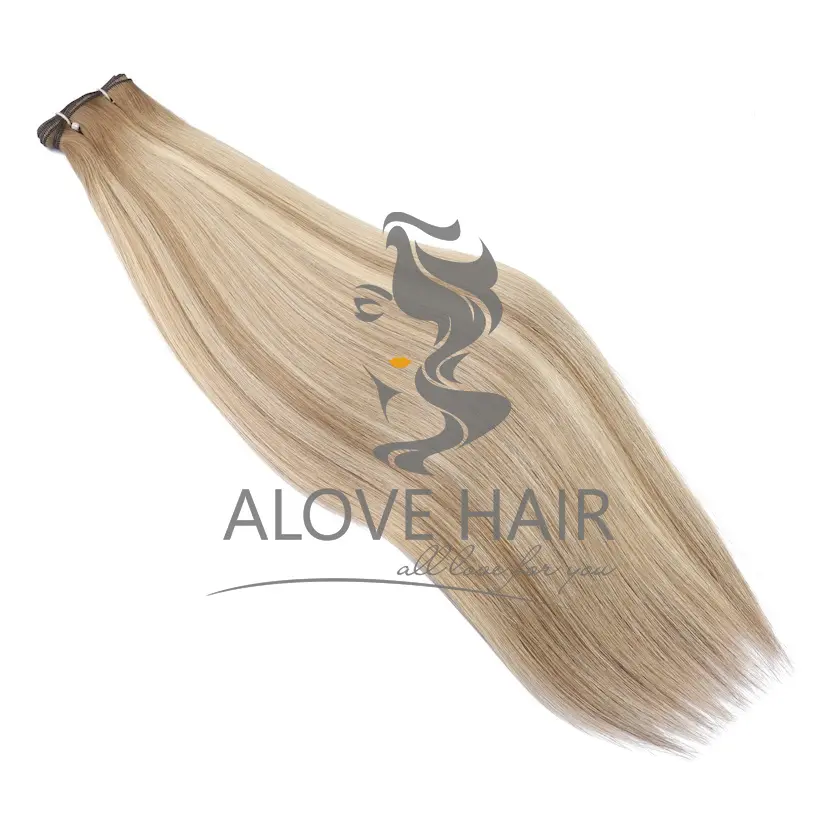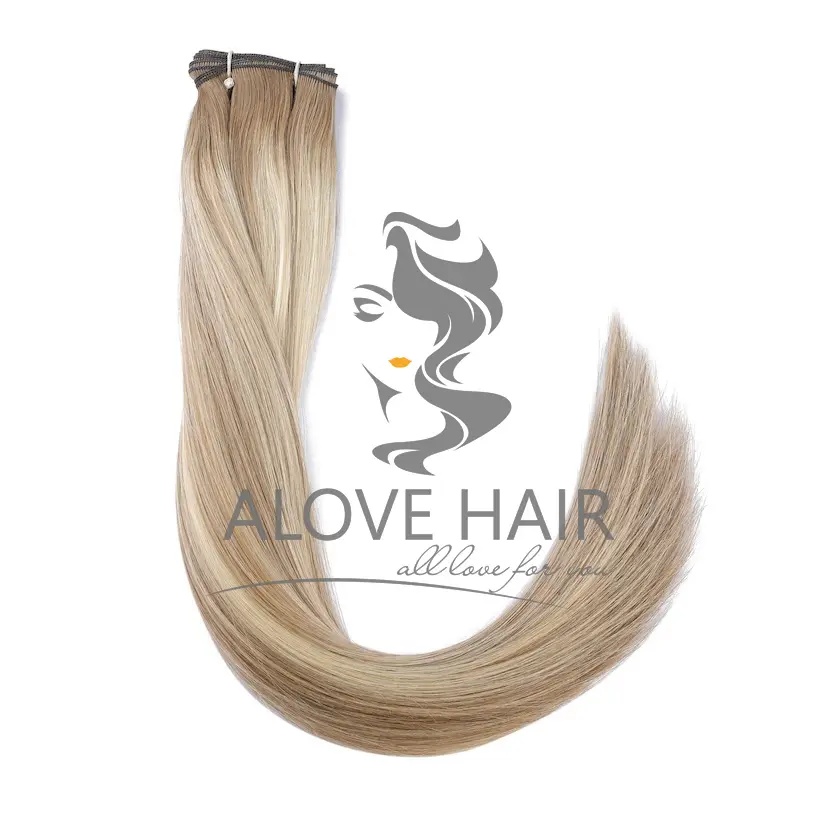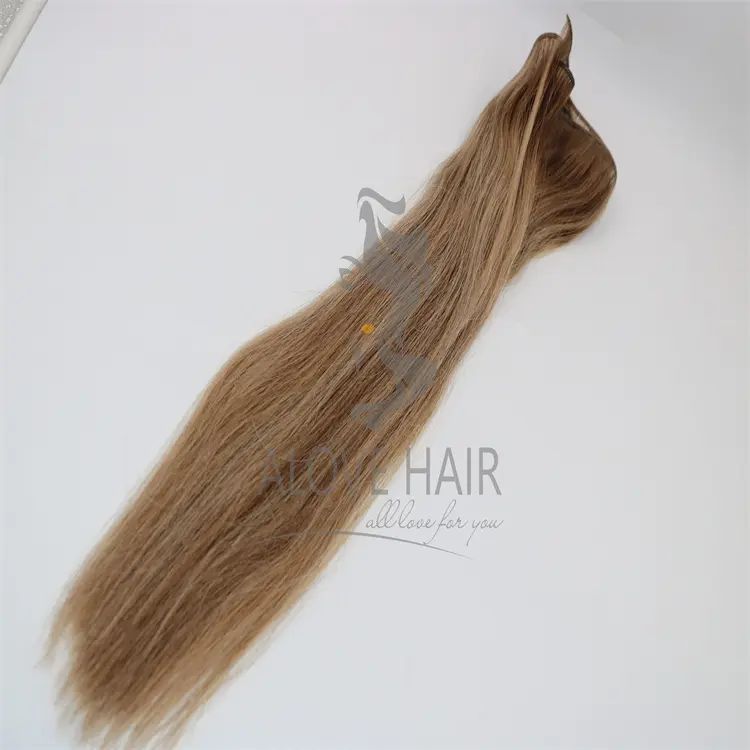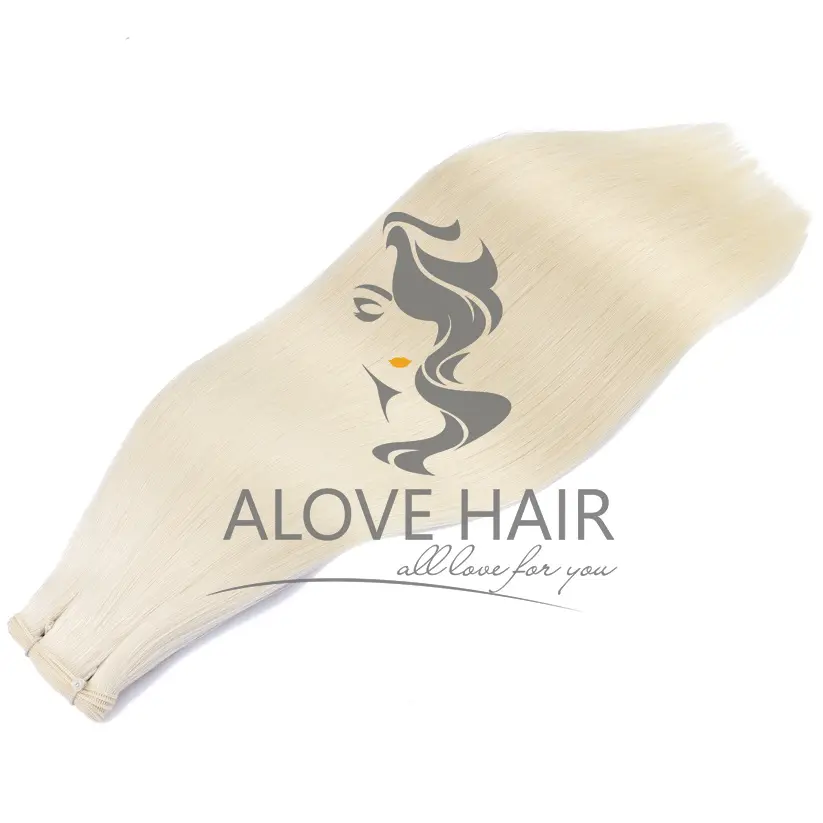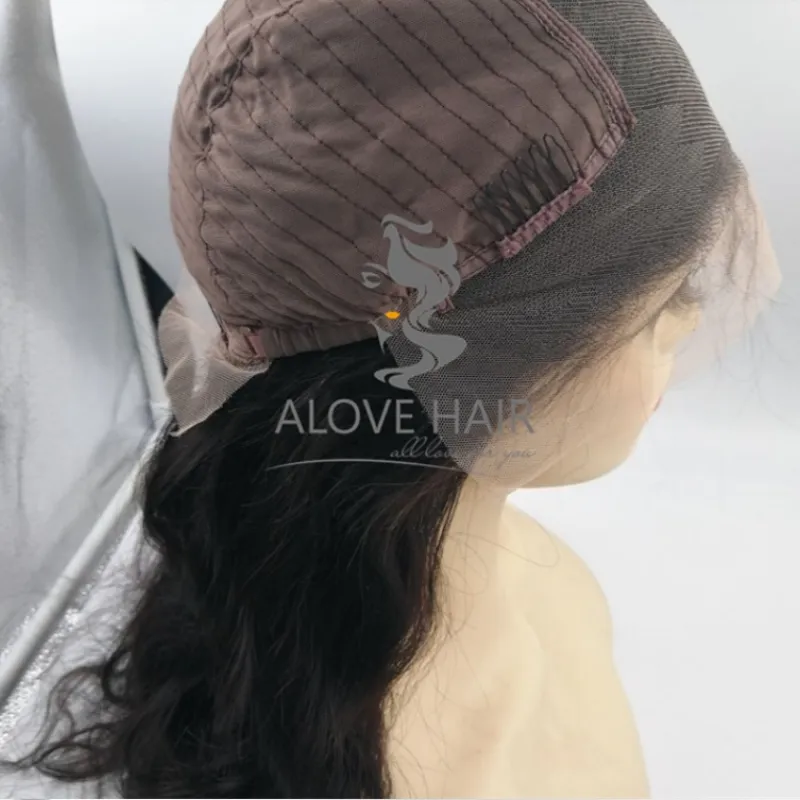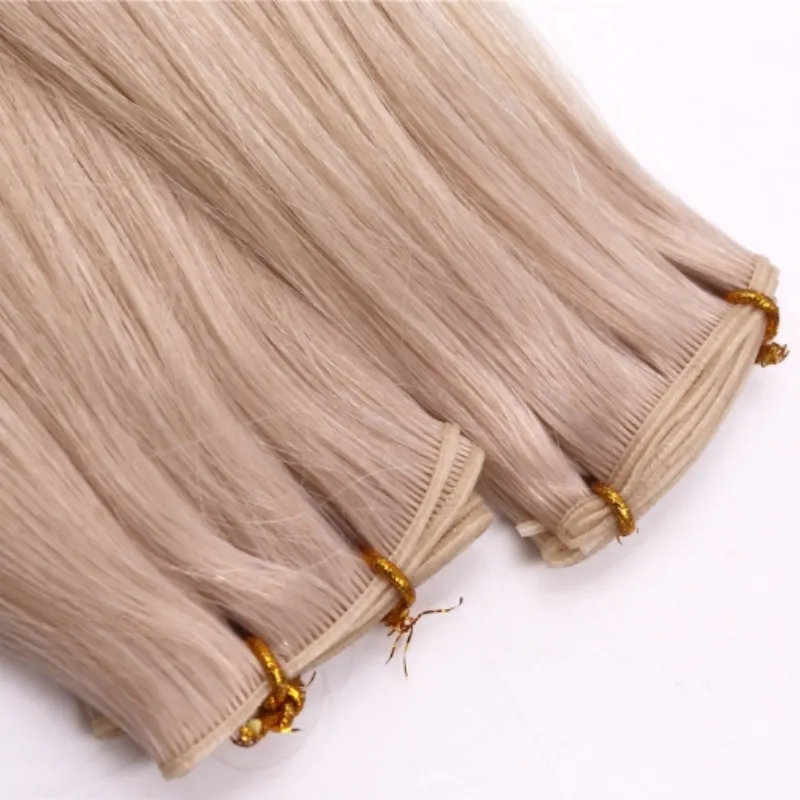Tape-in hair extensions have become one of the most popular semi-permanent extension methods for women seeking effortless length, volume, and a natural look. Unlike clip-ins, which require daily removal, or fusion extensions, which can be damaging, tape-ins offer a balance of convenience and low maintenance.
But are they the right choice for your hair type, lifestyle, and budget?
In this comprehensive guide, we'll break down:
The key advantages of tape-in extensions
The potential drawbacks you should know
A data-driven comparison with other extension types
Expert recommendations on who should (and shouldn't) get them
By the end, you'll know exactly whether tape-ins are your best option—or if another method would work better.
Pros of Tape-In Hair Extensions
1. Natural Look & Undetectable Blend
Tape-ins consist of thin, flexible wefts with medical-grade adhesive tabs. Because they lie flat against the scalp, they blend seamlessly with natural hair—unlike bulky clip-ins or obvious bead extensions.
Example: Celebrities like Kim Kardashian and Jennifer Lopez often use tape-ins for red-carpet events because they mimic real hair growth.
2. Lightweight & Comfortable
Since the wefts are featherlight (only 0.5–1.5 grams each), they don’t pull on roots like heavy sew-in weaves or fusion extensions.
Weight Comparison of Hair Extensions:
| Extension Type | Avg. Weight per Weft | Comfort Level (1-10) |
|---|---|---|
| Tape-Ins | 0.5–1.5g | 9 |
| Clip-Ins | 2–4g | 7 |
| Fusion/Bonded | 3–5g | 5 |
| Sew-In Weaves | 5–8g | 4 |
Unlike sew-ins (which take 3+ hours) or keratin-bonded extensions (which require strand-by-strand attachment), tape-ins can be applied in under an hour by a professional.
4. Low Damage Risk (When Properly Maintained)
Because the adhesive doesn't require heat or chemicals, tape-ins are gentler than fusion or micro-link extensions. A 2023 study in The Journal of Cosmetic Dermatology found that:
"Tape-in extensions caused 23% less hair breakage than fusion bonds when removed correctly."
5. Longevity: Lasts 6–8 Weeks
With proper care, tape-ins can be reused 2–3 times before needing replacement.
Lifespan Comparison:
| Extension Type | Avg. Lifespan | Reusable? |
|---|---|---|
| Tape-Ins | 6–8 weeks | Yes (2–3x) |
| Clip-Ins | 1 day | Yes |
| Fusion Bonds | 3–4 months | No |
| Sew-Ins | 6–8 weeks | No |
Cons of Tape-In Hair Extensions
1. Requires Professional Installation & Removal
Unlike clip-ins, tape-ins should not be self-applied. Improper placement can lead to:
Visible tabs (if placed too close to the part)
Premature slippage (if adhesive isn’t pressed firmly)
2. High Maintenance (Special Shampoos, No Oils)
The adhesive weakens when exposed to:
Sulfates
Silicones
Heavy oils (e.g., coconut, argan)
Example: A client who used oily scalp treatments reported 50% faster slippage compared to those who followed aftercare guidelines.
3. Not Ideal for Very Thin/Fine Hair
Because the adhesive needs a strong anchor, those with fine hair (< 100 strands per square inch) may experience:
Slippage (tabs detaching prematurely)
Visibility (tabs showing through sparse hair)
Hair Density Recommendations:
| Hair Type | Recommended Extension Method |
|---|---|
| Thin/Fine | Clip-ins, Halo extensions |
| Medium Density | Tape-ins, Micro-links |
| Thick/Coarse | Tape-ins, Sew-ins, Fusion |
4. Cost Over Time (300–300–800 Every 2 Months)
While initial installation is cheaper than fusion, re-taping every 6–8 weeks adds up.
Estimated 6-Month Cost:
| Extension Type | Initial Cost | Maintenance Cost (6 Months) | Total |
|---|---|---|---|
| Tape-Ins | $400 | $600 (3 re-tapes) | $1,000 |
| Clip-Ins | $200 | $0 | $200 |
| Fusion Bonds | $1,200 | $300 (1 touch-up) | $1,500 |
5. Not Swim/Sweat-Friendly
Chlorine, saltwater, and excessive sweat break down adhesive, leading to:
Slippage (extensions loosening after swimming)
Tangling (if adhesive weakens but doesn’t fully detach)
Who Should Get Tape-In Extensions? (Ideal Candidates)
Medium to thick hair (holds adhesive better)
Want long-term length/volume without daily removal
Can commit to salon visits every 6–8 weeks
Prefer a natural look over clip-in convenience
Celebrity Example: Hailey Bieber uses tape-ins for effortless, lived-in volume between salon visits.
Who Should Avoid Tape-Ins?
Very fine/thin hair (consider clip-ins or halo extensions)
Oily scalp types (adhesive breaks down faster)
Frequent swimmers/athletes (chlorine/sweat damages adhesive)
Budget-conscious users (clip-ins are cheaper long-term)
Final Verdict: Are Tape-Ins Right for You?
Choose Tape-Ins If You…
✔ Want a natural, long-lasting solution
✔ Have medium to thick hair
✔ Can invest in professional maintenance
Skip Tape-Ins If You…
✖ Have fine or thinning hair
✖ Need daily removal (e.g., for workouts)
✖ Prefer a low-maintenance, budget-friendly option
Next Steps
Consult a stylist for a hair density check.
Patch-test adhesive if you have sensitive skin.
Compare brands (e.g., Bellami, Luxy, Great Lengths).
Still unsure? Try clip-ins first to test if extensions suit your lifestyle before committing to tape-ins!
Premium Tape-In Hair Extensions Supplier – High Quality & Competitive Prices
Looking for a trusted tape-in hair extensions supplier? Choose us! As a leading hair extensions manufacturer in China, we specialize in high-quality, seamless tape-in extensions that blend naturally and last longer. Our products are crafted with 100% remy human hair, secure medical-grade adhesive, and customizable lengths/colors to meet your market needs. Enjoy competitive factory-direct pricing, low MOQs, and reliable OEM/ODM services. Partner with us to boost your beauty business with premium extensions your customers will love!
Why Choose Us?
100% Remy Human Hair – Soft, tangle-free, and durable
Strong & Safe Adhesive – No slippage, gentle on natural hair
Customization Options – Lengths (14-24 inches), colors, textures
Competitive Pricing – Factory-direct rates for higher profits
Reliable Supply – Fast production & shipping worldwide
Contact us to request samples or discuss your business needs!
